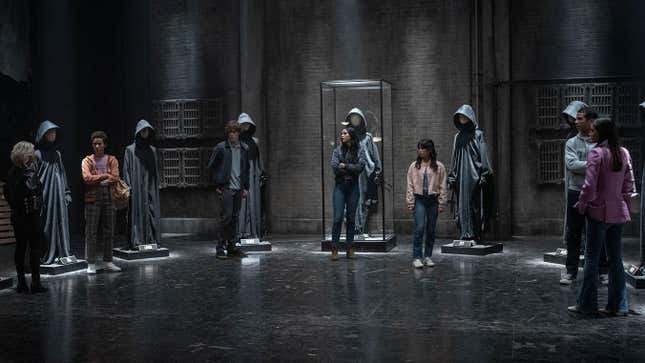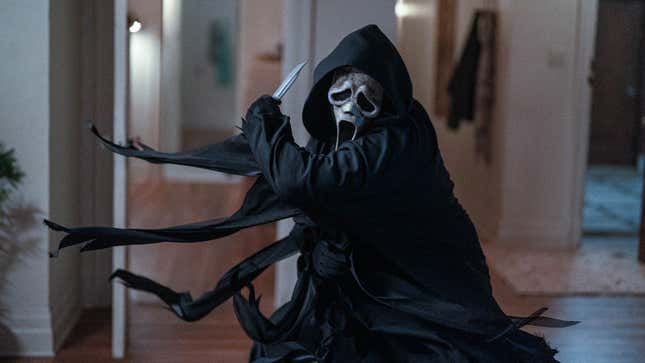‘Scream VI’ Is So Good It’s Scary
The team from last year's Scream "requel" is mostly all back and in better form in one of the franchise's strongest entries.
EntertainmentMovies

There’s a thing people say about sex and pizza that isn’t strictly true but gets at how reliably satisfying those things can be under the right conditions: Even when they’re bad, they’re good. That also goes for Scream movies. The six of them comprise the most consistent franchise in slasher history, and across all subgenres of horror, for that matter. And the latest, Scream VI, isn’t merely good, it’s one of the franchise’s best—as funny as it is scary as it is inventive. Its current crop of characters, introduced in last year’s Scream “requel,” have settled nicely into their roles, and they’re given even more to do in the longest of the franchise’s entries, where nary a minute is wasted as the plot hurtles through its New York setting.
In its profile, Scream VI, which is forecasted to have the biggest opening of the series (perhaps on account of Jenna Ortega’s exploding fame), reminds me of Nightmare on Elm Street 4: The Dream Master, the mind-bogglingly successful 1988 entry that was as committed to being a solid teen movie as it was to finding new, surrealistic ways to play with the franchise’s tools. Things went to shit when the fifth Nightmare movie was rushed out the following year. Interestingly, Scream VI was itself a sort of rush job, as it’s hitting theaters about 14 months after its relatively so-so (but you know, still good in the greater scheme of horror!) predecessor, the confusingly titled Scream. But the gang behind that one—directors Matt Bettinelli-Olpin and Tyler Gillett of the filmmaking collective Radio Silence, and screenwriters James Vanderbilt and Guy Busick—are back and seemingly energized. It’s as though after proving their competence with a fairly safe pass, they’ve been given the freedom to be funnier, weirder, and bloodier.
This Scream has a Manson family member’s penchant for knife penetration—the stabbings here are brutal and unflinching. There’s a similar sort of reckoning with and profiting off of violence as in 2021’s Halloween Kills, but it’s not as gratuitous or hypocritical. In fact, it almost approaches tasteful at times, though the film remains largely and rightly unpleasant—included is a disgusting description from one copycat killer on the thrill of murder that feels like an illicit examination of a depraved mind. Scream VI is willing to really get in there, under the skin, and play around with the guts of death and misery.
-

-

-

-

-

-

-

-

-

-

-

-

-

-

-

-

-

-

-

-

-

-

-

-

-

-

-

-

-

-

-

-

-

-

-

-

-

-

-

-









































